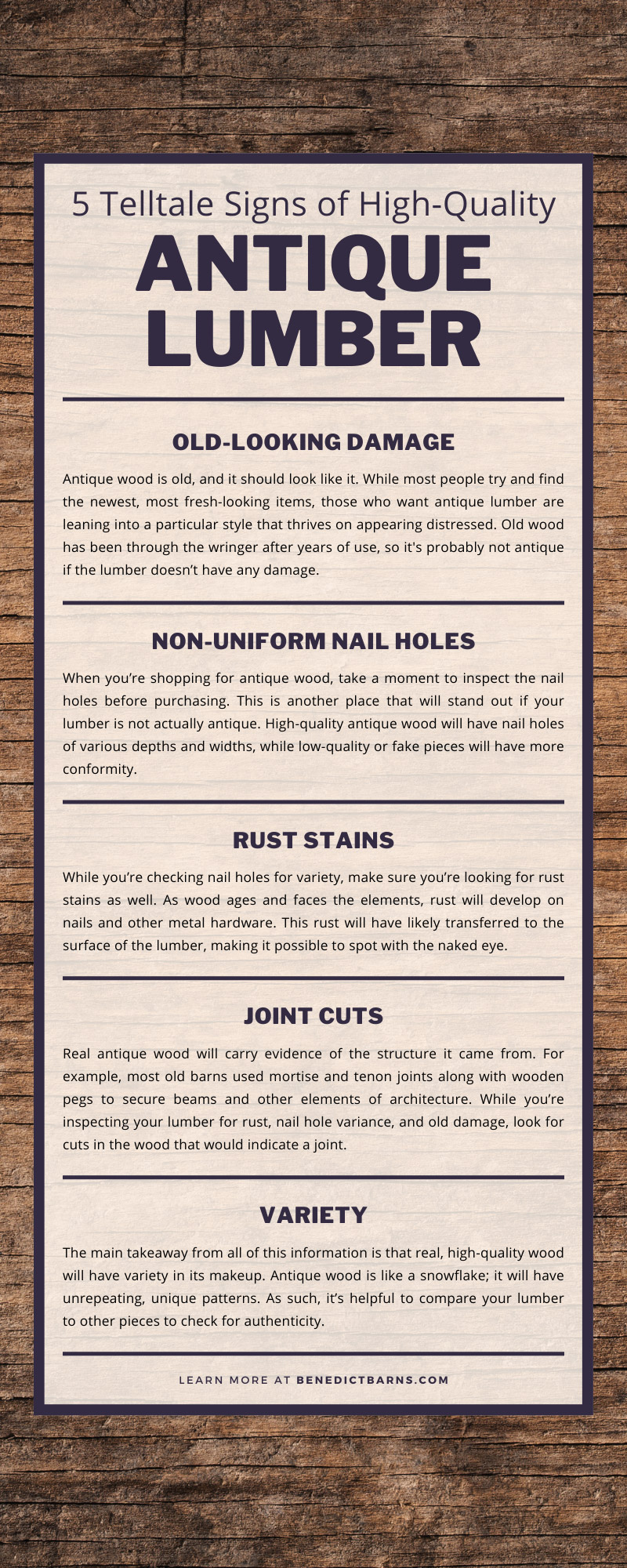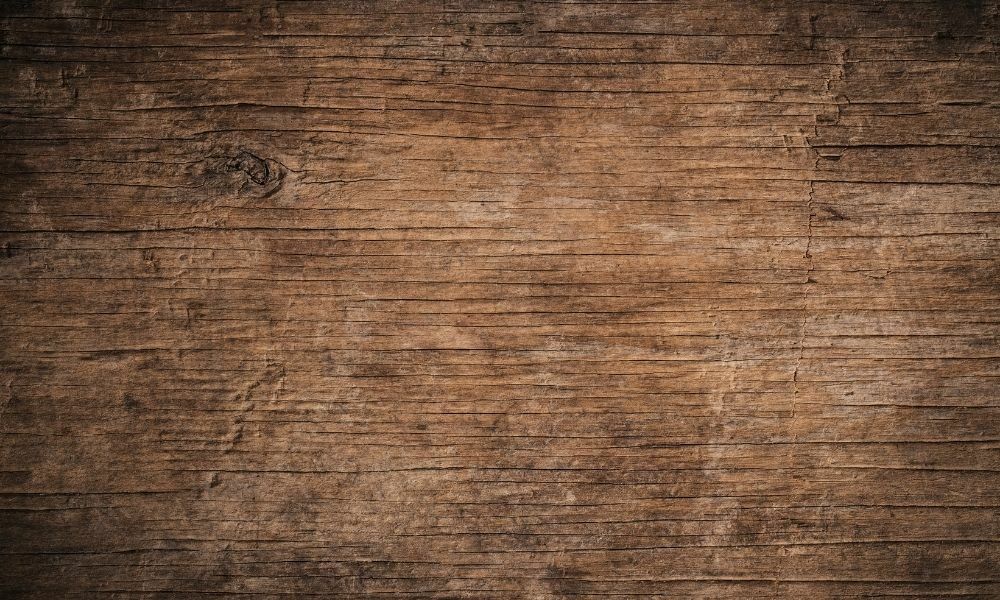Antique wood has become a huge staple in the home improvement world, and the trend is only growing and becoming more popular every day. Homeowners who love a rustic aesthetic jump at the chance to incorporate reclaimed lumber into their home structure. Accent walls, structural beams, cabinetry, and furniture are just a few examples of how people are using this unique material to their advantage.
However, like with most trends, businesses looking to make profits have jumped on the bandwagon. Companies are now mass-producing wood with a “vintage” look, creating confusion about whether or not something is authentic. The good news is that there are ways to distinguish between mass-produced wood and the real deal. Here are five telltale signs of high-quality antique lumber.
What Is Antique Lumber?
If you want to know how to differentiate between reclaimed antique lumber and imitations, you need to know exactly what it is you’re looking for. When someone describes a piece of wood as “reclaimed,” they mean that someone has repurposed the wood from its original source. This means that all antique wood is reclaimed, but not all reclaimed wood is antique.Antique lumber’s history is what makes this material unique. Professionals usually extract this type of wood from old buildings built from trees over 100 years old. Typically, more aged wood has very distinct characteristics different from fresher sources, so manufacturers now try to mimic this look in their products.
How To Identify High-Quality Antique Wood
As we have determined, all wood isn’t equal. Even though there’s a lot of “fake” vintage wood out on the market, there are a few telltale signs of high-quality antique lumber you can look out for. Most mass-produced pieces have a uniform look to them, so the main thing to keep your eye out for is variety.However, some manufacturers have gotten very good at imitating that special charm that makes antique wood unique. Still, knowing what to look for in your potential pieces will help you make the best decisions for your household. If you’re still on the fence about the authenticity of a piece of lumber, look for the signs below.
Old-Looking Damage
Antique wood is old, and it should look like it. While most people try and find the newest, most fresh-looking items, those who want antique lumber are leaning into a particular style that thrives on appearing distressed. Old wood has been through the wringer after years of use, so it's probably not antique if the lumber doesn’t have any damage.Check for outward cues that signify aged wear and tear. Your wood shouldn’t look “new;” that defeats the purpose of being “reclaimed.” Scrapes and scratches should look weathered. It’s difficult to mimic authentic damage, and artificial antique lumber will have wear that looks too uniform to be natural.
Non-Uniform Nail Holes
When you’re shopping for antique wood, take a moment to inspect the nail holes before purchasing. This is another place that will stand out if your lumber is not actually antique. High-quality antique wood will have nail holes of various depths and widths, while low-quality or fake pieces will have more conformity.This makes sense when you think about how people acquire reclaimed wood. Professionals get reclaimed lumber from barns and old building structures, which have likely been through modification over the years. Authentic antique wood will display these signs through nail holes that change as time goes on.
Rust Stains
While you’re checking nail holes for variety, make sure you’re looking for rust stains as well. As wood ages and faces the elements, rust will develop on nails and other metal hardware. This rust will have likely transferred to the surface of the lumber, making it possible to spot with the naked eye.There are many characteristics that manufactures can imitate, but rust is not one of them. This is because rust occurs through natural processes that take time to develop. Artificially distressed lumber will not have rust stains around areas where metal once was, which could indicate that your wood isn’t authentic.
Joint Cuts
Real antique wood will carry evidence of the structure it came from. For example, most old barns used mortise and tenon joints along with wooden pegs to secure beams and other elements of architecture. While you’re inspecting your lumber for rust, nail hole variance, and old damage, look for cuts in the wood that would indicate a joint.Old wood with joint cuts is easy to identify. It will likely have large, round or square holes that perfectly fit wooden pegs to attach end pieces. Processed, low-quality lumber will not have these joints cut into its surface since someone distressed it in a factory versus reclaiming it from its source.
Variety
The main takeaway from all of this information is that real, high-quality wood will have variety in its makeup. Antique wood is like a snowflake; it will have unrepeating, unique patterns. As such, it’s helpful to compare your lumber to other pieces to check for authenticity.Even pieces of lumber from the same source will vary in pattern and wear and tear. Antique wood will differ in knicks and scratches, as well as color and shine. On the other hand, mass-produced, low-quality lumber will be uniform in its makeup. If possible, see if you can analyze pieces of wood from the same source to check for these occurrences.
High-quality antique lumber tells a story. If you want your home to have that warm, cozy feeling only nature can provide, using authentic reclaimed wood is a necessity. Now that you know what to look for when purchasing vintage lumber, you can avoid scams and adorn your home with beautifully rich pieces that have all of that historic, rustic charm you’re seeking.
The best way to guarantee you’re making the right choice in lumber is by working with reputable professionals. We do the dirty work for you by dismantling old structures, reclaiming the materials, and turning them into timeless installations that will look amazing in your home. Whether you’re looking for flooring, beams, siding, or frames, Benedict Antique Lumber has the resources to fit your preference and meet all of your home improvement needs.


